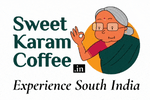
Millet, a dietary staple and the main source of protein in most of the developing world. Globally, millet is the sixth most cultivated grain after corn, rice, wheat, barley, and sorghum. It is very much suited to drought conditions and has great natural biodiversity. It can be cultivated in a variety of locations. They are one of the oldest foods known to humans and possibly the first cereal grain to be used for domestic purpose.
Millets are grown on marginal lands by some of the poorest and marginalized communities – the Dalits, the Adivasis, and the women in the dry land and hilly region. The millet symbolizes the food and knowledge sovereignty of Indian farmers and ensures a life of dignity and self-reliance for them. Most of the millet fields are inherently bio-diverse and no real farmer grows millets as a monocrop. They grow millets in combination with a host of pulses, legumes, vegetables, and oilseeds.

There are many factors that make millets more sustainable as crops. According to ICRISAT, one rice plant requires nearly 2.5 times the amount of water required by a single millet plant of most varieties. That is why millets are primarily grown in arid regions of Asia, Africa, and Latin America.
Millets can also withstand higher temperatures. Crops like rice and wheat can’t tolerate temperature more than 38-degree centigrade, while millets can tolerate a temperature of more than 460 degrees C. They can grow in saline soil. They can thus be grown as an important solution for farmers grappling with climate changes sea level rise which leads to an increase in soil salinity, heatwaves, droughts, floods etc. Due to this peculiar nature, they are termed as the “miracle grains” or the “crops of the future”. Millets are cultivated as dual-purpose crops (food and fodder). Millets help in reducing the atmospheric CO2 as this contribute to mitigating the climate change.
India is the largest producer of many kinds of millets, which are often referred to as coarse cereals. Apart from India, Nigeria, China, Mali, Burkina Faso, Sudan, Ethiopia, Chad, Senegal are the leading millet producers in the world.

Millets are some of the oldest of the cultivated crops and a group of highly valuable small-seeded grasses, widely grown around the world as cereal crops or grains for human food and as fodder. The Chinese believe that millet was brought from the heavens by Houji or “Lord Millet”. Millets were one of the five sacred grains in ancient China. By around 5000 BC, people in North-Central China were depending on millet as a staple food and by about 3000 BC millet was a staple food all over northern China. Millets have been important food staple in human history, particularly in Asia and Africa for the last 10,000 years. In India, millets have been mentioned in some of the oldest Yajurveda texts, identifying foxtail millet (priyangava), Barny and millet (aanara) and black finger millet (shyaamaka), this indicating that millet consumption was very common, pre dating to the Indian Bronze Age (4,500BC).

Millets are called ‘sridhanya’ meaning rich grains referring to their nutritional value. They can fill the nutritional gaps when one’s diet is predominantly non-vegetarian. In terms of nutritional value, millets can supersede rice and wheat. Millets are an extremely good source of fiber and protein when compared with white rice. They are rich in iron, copper, manganese, calcium, phosphorous, magnesium and B vitamins. They also contain antioxidants, flavonoids, certain amino acids, and tryptophan. Millets in our diet ensure glycerine control which in turn is effective against diabetes.
Major millets
- Pearl millet/Kambu
- Finger millet/Ragi
- Foxtail millet/Thinai
- Kodo millet/Varagu
- Little millet/Saamai
- Barnyard Millet/Kudhiraivaali
FAQs
- Are millets healthier than rice?
Millets are a low-calorie food which is rich in carbohydrates. They are packed with a lot of nutrients and therefore they are a healthier alternative to rice.
- What is the best time of the day to consume millets?
Millets are a very rich source of proteins and fibre and they are appropriate for consumption for breakfast, lunch and dinner.
- What is the best way to cook millets?
The best way to cook millets is to soak them in water before cooking. This makes millets more digestible and enhances their nutrient absorption.
- What are the health benefits of millet sprouts?
By sprouting millets you can significantly increase the concentration of lysine in your millets, which is an important amino acid to promote overall health. In addition to that, millet sprouts are also lighter in weight as conoater to normal millets.
Explore our range of Millet Spl from our store @ sweetkaramcoffee.in.
ALSO READ:
Why Javvarisi Vadam is always addictive in South India?












